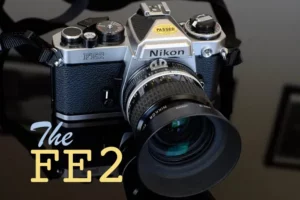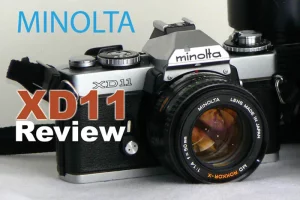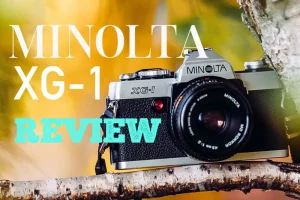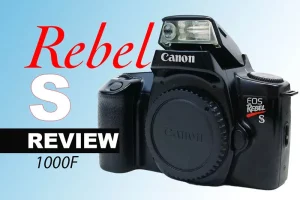Yashica FR-I Review: Better than a Contax?
Last Updated on February 17, 2023
Some time ago, I received a Contax 137MD camera that pleasantly surprised me, as detailed in my report. The camera boasts Zeiss optics and is optimal for capturing fast photos. However, I believe that a camera should not merely function as a film box, but rather it should meet specific technical and aesthetic standards.

Table of Contents
Yashica FR-I Specs
| Year release: | 1977 |
| Film type: | 135 film (35mm) |
| ASA: | 12 – 3200 |
| Viewfinder: | 92% field of view |
| Shutter type: | Electronic Shutter |
| Shutter Speeds: | 1 – 1/1000 sec, Bulb |
| Self timer: | 7 sec |
| Meter: | Electronic |
| Battery type: | 6v PX28 Lithium or Silver Oxide |
| Flash Mount: | Hotshoe at 1/60 flash sync |
| Size dimensions: | 142.5 x 87 x 50, WDH |
| Weight: | 660 g |
C/Y bayonet Mount
Now that’s often the case with the lens bayonets. Unfortunately, my great Canon optics don’t fit the dream camera from Nikon, or vice versa. With the Contax/Yashica bayonet, the selection is, so to speak, twice as large as with others. As the name suggests, Contax cameras as well as those from Yashica can be used.
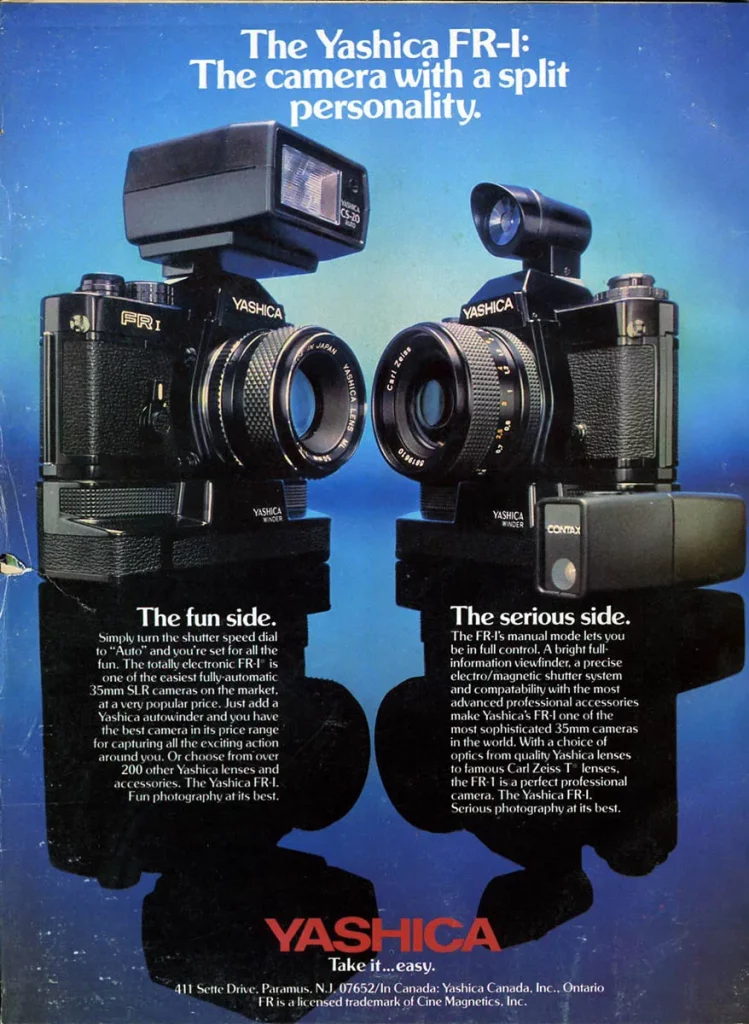
When I was looking for the perfect camera for my Zeiss Planar, I first looked at Contax. But either nothing was to be found in the short term. I would have liked to have had a Contax Aria in my hands. Or I just found too expensive and suspicious eBay offers (Contax RTS).
The frame counter can be found on the outer edge of the right shoulder of the Yashica FR1. Next to it are the two central controls. The film transport lever with integrated release button in the middle and the timer dial to the left. Thankfully, this has no end point and can be completely twisted in both directions. The trigger offers great resistance and both pressing and rolling the finger works well.
Exposure metering
TTL metering can be activated on the back of the right shoulder. Yashica has integrated a clever solution for this. Because the film transport lever also serves to engage the exposure metering button. Exposure metering is activated by pressing it.
If you let go of it, however, the exposure metering switches off again. There is often a desire to have exposure metering permanently activated, e.g. B. a series of pictures has been taken. To do this, move the film transport lever slightly from the rest position to the ready position and push the exposure metering button to the right, where it engages.

If you want to switch exposure metering off again, simply push the film transport lever back in the direction of the camera body and the exposure metering button snaps back.
Right next to it, under a small cap, is the socket for the cable remote release. Otherwise, the Yashica FR-I offers a film label holder on the back. The front, in turn, houses a self-timer lever on the left, the bayonet release button and the dimming button. There is a flash sync socket to the right of the bayonet.
The viewfinder
The Yashica’s viewfinder has a hotshoe on its roof to accommodate standard flash units. A look into the eyepiece gives access to the screen and all the information that is important during the recording.
Interestingly enough, a diagonally oriented split image rangefinder in the middle, surrounded by a microprism ring. Everyone has to decide for themselves whether diagonal alignment is better than horizontal alignment. I found the advantage that there is always a diagonal for focusing in both portrait and landscape orientation to be insignificant.
But maybe there is someone who has been waiting for exactly this feature. Overall, the Yashica FR-I offers a good, large, bright viewfinder. 92% coverage at 0.87x is now nothing to brag about, but big enough.
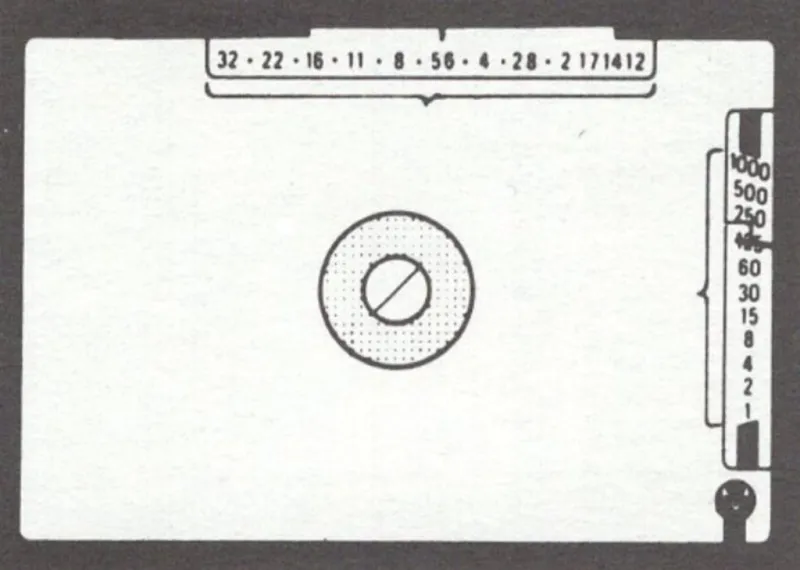
At the top edge of the viewfinder there is a clear aperture scale and a time scale on the right, from which the parameters set can be easily read. There is also a reminder display if you are in manual mode, that’s it. Here, too, there is a certain tidiness that makes up the entire design of the camera.
When shooting
Taking a picture is just as unspectacular and factual as the exterior of the camera suggests. The Yashica FR-I makes framing in the viewfinder easy. The last check to see if the exposure is right can be done without stopping. Pressing the electromagnetic shutter button and a slightly hoarse click reveals that the picture is unspectacular and efficient.

Video: Camera overview
I liked the everyday perspective with this camera shown in this video.
Yashica FR-I sample photos



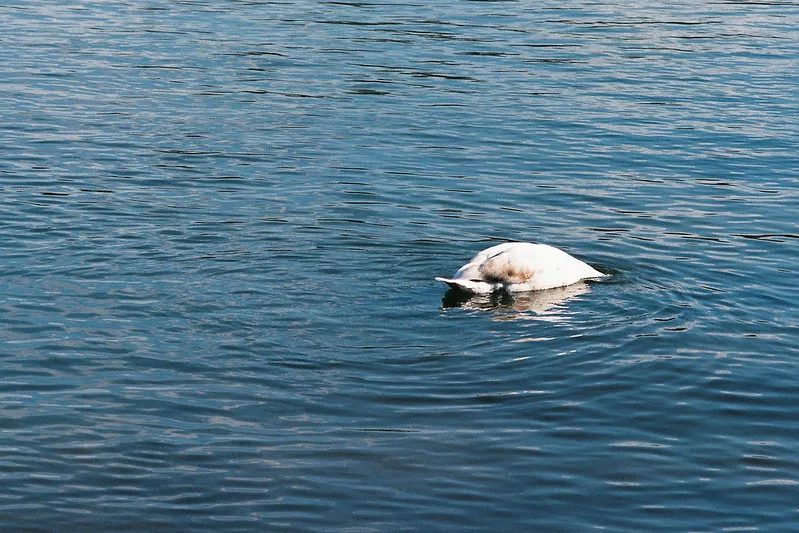

Conclusion
Tidy: this word runs through this report like no other. And that’s exactly how I can characterize the Yashica FR-I. Where other cameras come across as somewhat playful, sometimes even with slightly odd design choices that cause a little head-scratching, the Yashica is the polar opposite.
No gimmicks and frills, but absolutely business-like is their appearance. But their biggest plus also has a downside. The downside is a certain impersonality, a lack of emotion that comes from grabbing the camera. Unfortunately, it wasn’t love at first sight for me. Admittedly, I miss a bit of myth like a Leica or a Pentax Spotmatic.
But maybe that’s why it goes so well with the Zeiss lenses. Sober objectivity doesn’t have to be negative. With all these subjective impressions, however, it must also be stated that the Yashica FR-I is robust and seems to be built for eternity. So does the concentration on the essentials make it a boring camera? Everyone has to answer this question for themselves.

